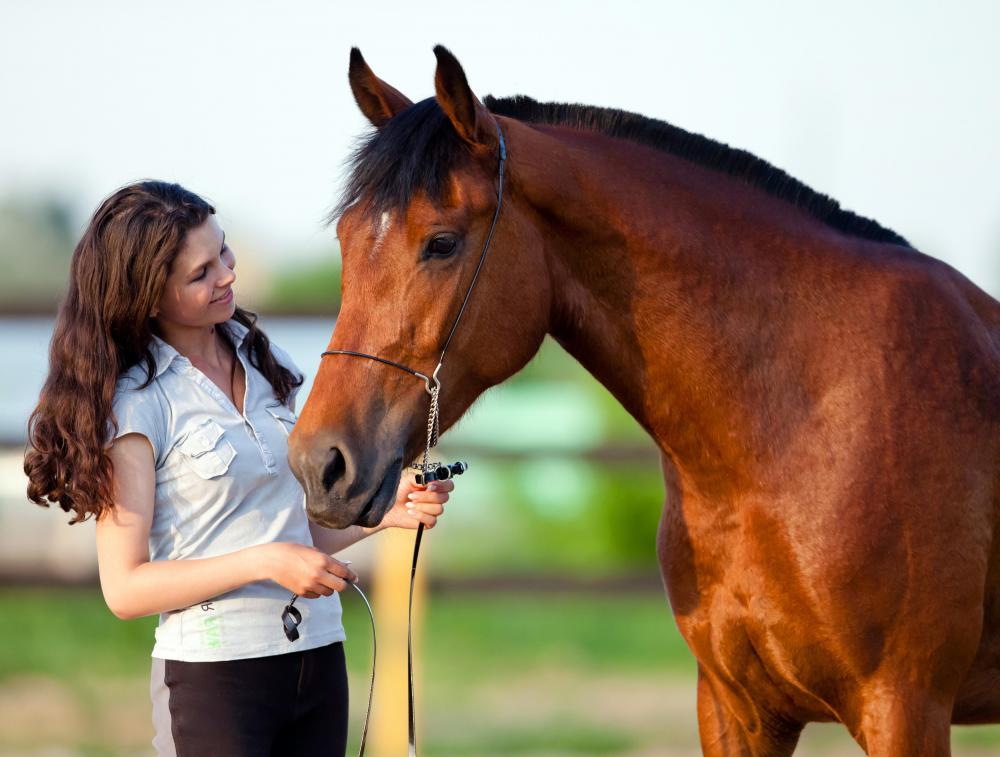At AllThingsNature, we're committed to delivering accurate, trustworthy information. Our expert-authored content is rigorously fact-checked and sourced from credible authorities. Discover how we uphold the highest standards in providing you with reliable knowledge.
What is Fox Trotting?
Fox trotting is a unique horse gait which is most commonly seen in the Missouri Fox Trotter, although some other breeds of horse exhibit very similar gaits, or can be trained to develop a fox trot. This gait is famously very even and smooth, and it is energy efficient for the horse, which means that it can be sustained over an extended period of time. Horses which are not from fox trotting breeds generally cannot exhibit this gait, and while it is a natural gait in some horse breeds, it usually has to be refined.
This gait is one of a family of horse gaits known as “ambling” gaits, falling in speed somewhere between a walk and a canter. In the case of the fox trot, the gait has four beats, and it is diagonal, meaning that front and hind legs from opposite sides of the body are moved forward together. Fox trotters do not exhibit high-stepping leg action, preferring more modest strides which create a very smooth ride and a gentle rocking motion which moves the rider forward and back in the saddle.

When a horse is trained properly, fox trotting has a distinctive 1-2, 3-4 beat, with a pause between the second and third beats. The front foot also lands before the back foot does, cushioning the gait and making it very smooth. From the point of view of an observer, the fox trot looks very relaxed and often effortless, although it can be remarkably speedy. The horse often bobs his or her head along with the gait, a trait which some people find rather charming.

This gait developed among horses in the American South which were bred for plantation overseers and farmers, as well as for pleasure. Southern plantations were often quite large, so it was necessary to develop horses with stamina and smooth gaits to make inspections pleasant and reasonably efficient. The canter is a fast gait, but not a very sustainable one, and while the trot is sustainable, it is not very comfortable; fox trotting is a compromise between the two which blends speed and comfort.
People who have not ridden fox trotters before should use the services of a trainer when they first start out. It is easy for horses and riders to develop bad habits which muddy the gait, giving the horse less power and making the gait much less elegant. A trainer can show a rider how to work with a horse while it is fox trotting, and how to eliminate bad habits before they become a problem.
Frequently Asked Questions
What is fox trotting in horses?
Fox trotting is a unique gait exhibited by certain horse breeds, notably the Missouri Fox Trotter. It's a smooth, four-beat gait where the horse walks with the front feet and trots with the hind, creating minimal bounce for the rider. This gait is especially valued for its comfort over long distances and is often seen in trail and endurance riding.
How does the fox trot differ from other horse gaits?
The fox trot is distinct from other gaits like the walk, trot, canter, and gallop. Unlike the two-beat trot, which can be bouncy, the fox trot is a four-beat gait with a broken diagonal pairing. This means that the horse's front foot lands just before the opposite hind foot, providing a smoother ride. It's particularly known for its characteristic "nodding" head motion in rhythm with the gait.
Which horse breeds are known for fox trotting?
The Missouri Fox Trotter is the breed most associated with the fox trot gait, as it's a part of the breed's name and heritage. However, other breeds like the Mountain Pleasure Horse and certain lines of Tennessee Walking Horses can also naturally perform this gait. Breeders often select for this trait to ensure the gait's presence in future generations.
Is fox trotting a natural gait or is it trained?
Fox trotting is a natural gait for some horse breeds, meaning they are born with the ability to perform it without human intervention. While training can refine and enhance the gait's smoothness and consistency, breeds like the Missouri Fox Trotter typically exhibit the fox trot instinctively from a young age, indicating a strong genetic component.
What are the benefits of riding a horse that fox trots?
Riding a horse that fox trots offers several benefits, including increased comfort due to the gait's smoothness, which reduces rider fatigue. This makes it ideal for long trail rides. Additionally, the fox trot provides sure-footedness and stability on uneven terrain, making it a preferred gait for riders who cover challenging landscapes.
Can fox trotting be seen in competitions?
Yes, fox trotting is showcased in competitions, particularly those organized for gaited horse breeds. The Missouri Fox Trotting Horse Breed Association, for example, hosts shows where the fox trot gait is judged for its form, rhythm, and smoothness. These events celebrate the breed's heritage and allow breeders and riders to demonstrate their horses' proficiency in the gait.
AS FEATURED ON:
AS FEATURED ON:












Discuss this Article
Post your comments